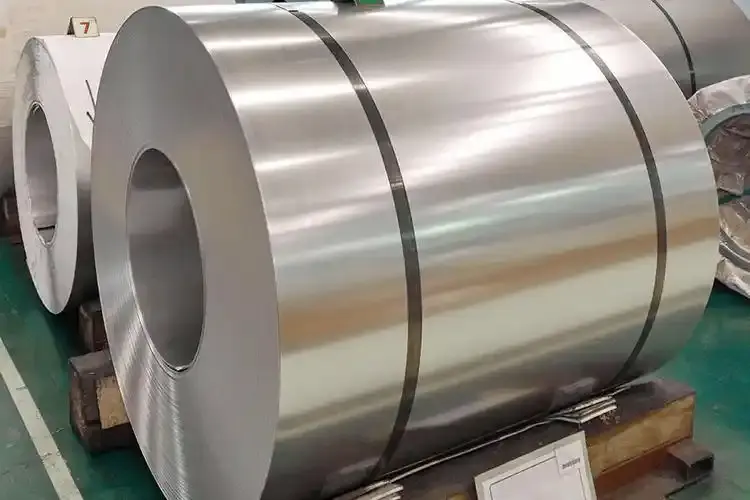Comparison of Stainless Steel Standards in Different Countries

Since stainless steel was invented by British scientist Henry Brelley in 1916, there has been considerable development. Various types of stainless steel were invented. Each major industrial country has its own set of stainless steel standards. This article will record in detail the comparison of different standards in various countries. I hope that through the reading of this article, I can provide you with information when purchasing stainless steel.
Number and Representation of Steel
①Use international chemical element symbols and national symbols to represent chemical components, and Arabic letters to represent component content:
Such as China, Russia 12CrNi3A
②Use fixed-digit numbers to indicate steel series or numbers; such as the United States, Japan, 300 series, 400 series, 200 series;
③The serial number is composed of Latin letters and sequences, which only indicates the purpose.
J3 Stainless Steel : A Complete Guide For Importers
China’s Numbering Rules
①Using element symbols
②Purpose, Chinese pinyin, open-hearth steel: P, boiling steel: F, killed steel: B, Class A steel: A, T8: special 8, GCr15: ball
◆Composite steel, spring steel, such as 20CrMnTi 60SiMn (use a few ten thousandths to express the content of C)
◆Stainless steel, alloy tool steel (using a few thousandths to express C content), such as 1Cr18Ni9 one-thousandth (ie 0.1% C), stainless C≤0.08% such as 0Cr18Ni9, ultra-low carbon C≤0.03% such as 0Cr17Ni13Mo
Stainless Steel Chemical Composition – YAOYI Stainless Steel
AISI 304; AISI 301; AISI 316;AISI 316L…
- Thickness: 0.02mm – 0.2mm
- Width: 25mm – 1600mm
International Stainless Steel Standards Marking Method
The American Iron and Steel Institute uses three digits to indicate various standard grades of forgeable stainless steel. among them:
①Austenitic stainless steel is marked with 200 and 300 series numbers
②Ferritic and martensitic stainless steels are represented by numbers in the 400 series. For example, some of the more common austenitic stainless steels are marked with 201, 304, 316 and 310
③Ferritic stainless steel is marked with 430 and 446, martensitic stainless steel is marked with 410, 420, and 440C, duplex (austenite-ferrite)
④Stainless steel, precipitation hardening stainless steel, and high alloys with iron content less than 50% are usually named by patent names or trademarks.
J2 Stainless Steel: A Complete & Thorough Guide
Stainless Steel Grade Group
200 series-chromium-nickel-manganese austenitic stainless steel
300 series—chromium-nickel austenitic stainless steel
Model 301—good ductility, used for molded products. It can also be hardened by mechanical processing. Good weldability. Abrasion resistance and fatigue strength are better than 304 stainless steel.
Model 302—The corrosion resistance is the same as that of 304 because the carbon content is relatively high, the strength is better.
Model 303—It is easier to cut than 304 by adding a small amount of sulfur and phosphorus.
Model 304—general model; that is, 18/8 stainless steel. The GB grade is 0Cr18Ni9.
Model 309—Compared with 304, it has better temperature resistance.
Model 316-after 304, the second most widely used steel grade, mainly used in the food industry and surgical equipment, adding molybdenum to obtain a special corrosion-resistant structure. Because it has better resistance to chloride corrosion than 304, it is also used as “ship steel”. SS316 is usually used in nuclear fuel recovery devices. 18/10 grade stainless steel usually also meets this application level.
Model 321—Except for the addition of titanium to reduce the risk of corrosion of the material welds, other properties are similar to 304. Stainless steel decorative pipe, 201 stainless steel pipe, 304 stainless steel pipe
400 series-ferritic and martensitic stainless steel
Model 408—Good heat resistance, weak corrosion resistance, 11% Cr, 8% Ni.
Model 409—the cheapest model (British and American), usually used as a car exhaust pipe, is a ferritic stainless steel (chrome steel).
Model 410—Martensite (high-strength chromium steel), with good wear resistance and poor corrosion resistance.
Model 416—Add sulfur to improve the processing performance of the material.
Model 420—”cutting tool grade” martensitic steel, similar to the earliest stainless steel such as Brinell high chromium steel. It is also used for surgical knives, which can be very bright. Model 430—Ferritic stainless steel, for decoration, such as car accessories. Good formability, but poor temperature resistance and corrosion resistance.
Model 440—High-strength cutting tool steel with slightly higher carbon content. After proper heat treatment, higher yield strength can be obtained. The hardness can reach 58HRC, which is among the hardest stainless steel. The most common application example is the “razor blade”. There are three commonly used models: 440A, 440B, 440C, and 440F (easy processing type).
500 series-heat-resistant chromium alloy steel.
600 series—Martensitic precipitation hardening stainless steel.
Model 630—The most commonly used precipitation hardening stainless steel model, usually also called 17-4; 17% Cr, 4% Ni.
How To Find The Right Stainless Steel Supplier – YAOYI Stainless Steel
Comparison Table of National Stainless Steel Group Standards
|
Standard |
Name |
|
GB |
National Standards of the People’s Republic of China |
|
KS |
Korean Standard |
|
AISI |
America Iron and Steel Institute |
|
SAE |
Society of Automative Engineers |
|
ASTM |
American Society for Testing and Material |
|
AWS |
American Welding Society |
|
ASME |
American Society of Mechanical Engineers |
|
BS |
British Standard |
|
DIN |
Deutsch Industria Normen |
|
CAS |
Canadian Standard Associatoin |
|
API |
American Petroleum Association |
|
KR |
Korean Resister of Shipping |
|
NK |
Hihon Kanji KOKI |
|
LR |
Llouds Register of Shipping |
|
AB |
American Bureau of Shipping |
|
JIS |
Japanese Standard |
|
China |
USA |
Germany |
UK |
France |
Italy |
Spain |
Japan |
||
|
GB |
AISI/SAE |
W.-nr. |
DIN |
BS |
EN |
AFNOR |
UNI |
UNE |
JIS |
|
12Cr17Ni7 |
301 |
1.431 |
X12CrNi177 |
– |
– |
Z17CN17.07 |
X12CrNi1707 |
F.3517 |
SUS 301 |
|
06Cr18Ni9 |
304 |
1.435 |
X5CrNi189 |
304S11 |
58E |
Z6CN18.09 |
X5CrNi1810 |
F.3504 |
SUS 304 |
|
022Cr19Ni10 |
304L |
1.4306 |
X2CrNi1911 |
304S11 |
– |
Z2CN18.10 |
X2CrNi1811 |
– |
SUS 304L |
|
1Cr18Ni9MoZr |
303 |
1.4305 |
X2CrNi188 |
304S21 |
58M |
Z10CN18.09 |
X10CrNi1809 |
F.3508 |
SUS 303 |
|
– |
304L |
1.4306 |
X2CrNi189 |
304S12 |
– |
Z2CN1810 |
X2CrNi18.11 |
F.3503 |
SCS19 |
|
06Cr17Ni11Mo2 |
316 |
1.4401 |
X5CrNiMo1810 |
316S16 |
58J |
Z6CND17.11 |
X5CrNiMo1712 |
F.3543 |
SUS 316 |
|
06Cr27Ni12Mo3 |
316L |
1.4435 |
X2CrNiMo1812 |
316S13 |
– |
Z2CND17.12 |
X2CrNiMo1712 |
– |
SUS 316L |
|
06Cr18Ni11Ti |
321 |
1.4541 |
X10CrNiTi189 |
321S12 |
58B |
Z6CND18.10 |
X6CrNiTi1811 |
F.3523 F.3523 |
SUS 321 |
|
06Cr18Ni11Nb |
347 |
1.455 |
X10CrNiMo189 |
347S17 |
58F |
Z6CND1811 |
X6CrNiNb1811 |
F.3552 F.3524 |
SUS 347 |
|
Cr18Ni12Mo2T |
316Ti |
1.4571 |
X10CrNiMoTi1810 |
320S17 |
– |
Z6CND17.12 |
X6CrNiMoTi1712 |
F.3535 |
– |
|
Cr17Ni12Mo3Mb |
318 |
1.4583 |
X10CrNiMoNb1812 |
– |
– |
Z6CND1713B |
X6CrNiMoNb1713 |
– |
– |
|
1Cr23Ni13 |
309 |
1.4828 |
X15CrNisI2012 |
309S24 |
– |
Z15CNS2012 |
X6CrNi2520 |
– |
SUH 309 |
|
12Cr17Mn6Ni5N |
201 |
1.4372 |
– |
– |
– |
– |
– |
– |
SUS 201 |
|
12Cr18Mn9Ni5N |
202 |
1.4373 |
– |
– |
– |
– |
– |
– |
SUS 202 |
Is 301 Stainless Steel Magnetic?
Reference
http://en.wikipedia.org/wiki/Stainless_steel
https://en.wikipedia.org/wiki/SAE_steel_grades
https://www.thespruce.com/stainless-steel-cookware-care-4071580
